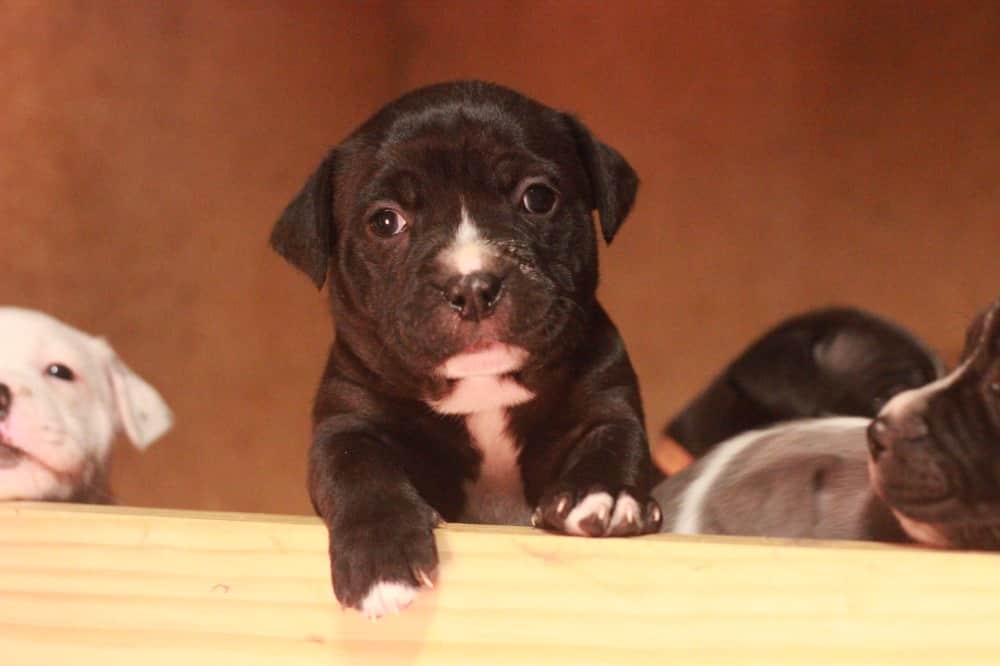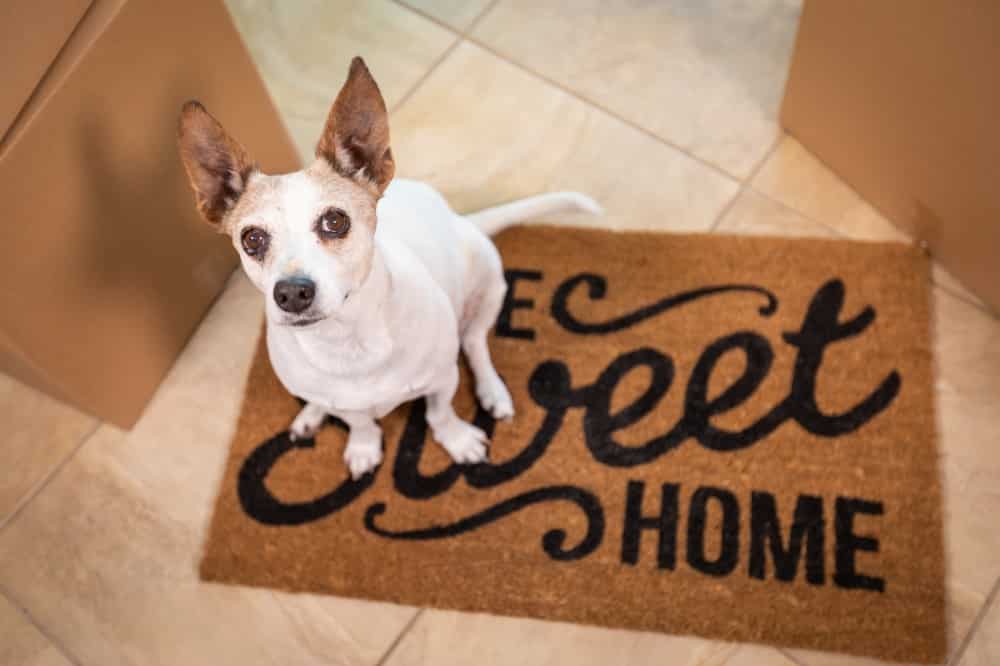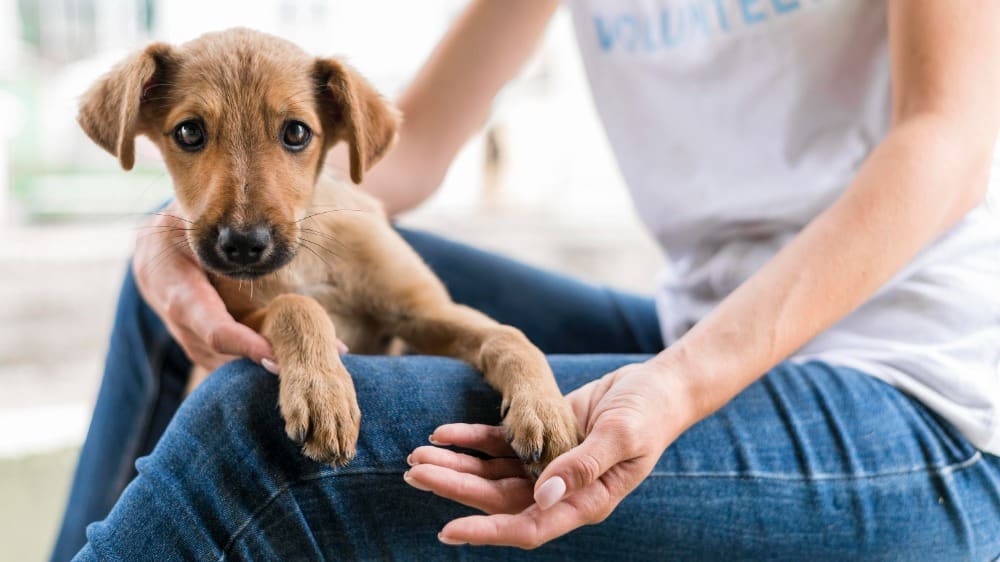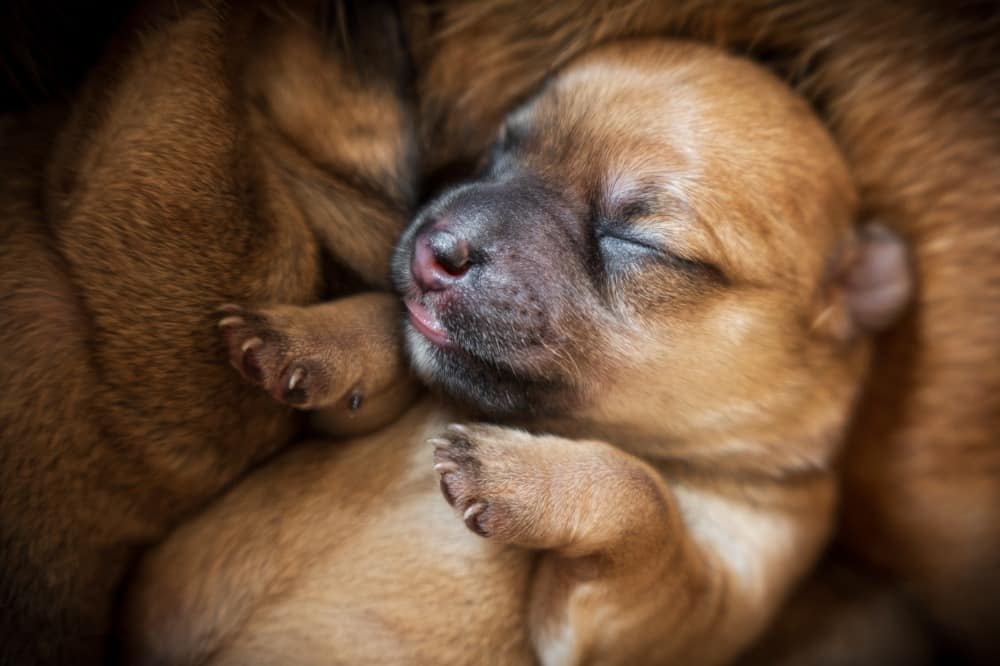The day has finally come to bring your new puppy home! A puppy is a significant commitment, so make sure the entire family is on board with adding this newest member of the family before you leap into bringing a puppy home. In addition, you are bringing a new life into your home to keep and care for, which is a lifelong commitment. Be sure to research the best type of puppy for your family, including temperament, exercise requirements, and health issues. Continue reading for advice on bringing a puppy home.
Preparation Tips for Your New Puppy
Before you head out to bring home your new puppy, there are a few things you will need. Preparation is key to making sure everyone settles in properly. Make a detailed list of supplies you need so you’ll be ready for your puppy as soon as he walks through the door! Purchase puppy pads for those unavoidable accidents, as well as a spot begone spray to help erase smells from mistakes. Get decent, age-appropriate training treats, as well as a food and water dish. If you have stairs or sections of your home where you don’t want the puppy to be when you’re home with him, choose an inexpensive baby gate that is simple to install.
Bringing a Puppy Home Checklist
- Dog Crate
- Toys
- Nutritional age-appropriate food
- Dog collar
- Dog leash
- Identification tags
- Bowls for food and water
- Potty pads
- Spray cleaner for stains
- Treats
- Gates to keep puppy contained
- Puppy blankets or bed

The big day is here! You’re on your way to pick up your new furry companion and need to know what to bring and how to introduce yourself to this dog. After all, first impressions count!
What Size of Crate Does My Puppy Need?
If you are unsure on which crate to get your puppy, know that size matters. Purchase a crate that fits them! Little puppies do not require the biggest crate available. While your puppy should have plenty of room to grow into his crate, having too much space can cause him to make messes in the kennel. However, if the kennel is too small, your puppy will be uncomfortable. Base the size of the kennel you purchase on how big your puppy will get.
Keeping the crate in your room will make your puppy feel safe and secure as he gets to know you and trust you. Placing the crate in another room may save your sleep, but it may also make your puppy feel alone and have accidents. You may want to start with the crate in your room and gradually move it to his own space.
Puppy Safe Toys
Puppies learn through play, so providing interesting, safe toys for him to play with will help him develop and bond with you. Choose a few toys that you believe will appeal to a puppy early and have them ready before bringing a new puppy home. Then he’ll have his pick of toys to play with instead of playing with or chewing on things he should not!
Food for Puppy
Check with your breeder or shelter to see what food your puppy has been eating. Then buy a small bag of the same food for when he gets home. You can transition your puppy to the food your veterinarian suggests; however, you will want to do this over time. When it comes to bringing home a puppy at 8 weeks, nothing beats a delicious supper and new toys! Also, you’ll spare yourself the hassle of attempting to go out to the shop in the first few days he’s at home to try to get the brand he requires if you have his brand of food on hand.
If you introduce new puppy foods to your pet too rapidly, they may develop intestinal problems. Instead, choose a vet-recommended brand specifically for young puppies and ease them into it gradually over time with a tiny bit of new food mixed in.

Puppy Identification, Collar and Leash
There’s a high possibility your new puppy will already be wearing a collar when he arrives. However, choose one that is extensible, so they may continue to wear it as they grow and mature! Before bringing your puppy home, get a collar and a leash that you like and can easily use.
Your puppy will hopefully never run away, but having a name tag with his and your names, as well as your phone number, engraved on it is a terrific way to keep him safe. So, bring your pup’s name tag and collar with you when you pick him. At Dog ID Collar, you will find high quality dog collars and leashes, all customizable.
Snuggles and Sniffs Before Bringing a Puppy Home
Allow your new puppy to smell you as much as possible when you pick him up to bring him home! Snuggles and sniffs allow him to become thoroughly acquainted with your scent. If it’s permitted, you might want to get a head start by bringing an article of clothing such as a t-shirt that smells like you to the breeder or shelter where your puppy is. Getting your puppy familiar with your scent before bringing him home can make the transition smoother.

A word of caution on bringing puppy home in car: do not hold your puppy on the ride home. Instead, start your puppy on the right track, and place them in a travel kennel. Your puppy’s safety in the car is crucial. Be sure to put an old t-shirt or blanket that smells like you and allow them to become accustomed to your scent. Talk to them in the car to reassure them and familiarize them with your voice.
Training Your Puppy and Bringing a Puppy Home
Training your puppy to ensure his safety and the safety of others is essential! This includes making sure that your home is safe for the puppy. Below are a few things to consider when bringing a new puppy home.
Puppy Proof Before Bringing a Puppy Home
Puppies are like babies, and having too much going on at once can be a disaster! When introducing your puppy into your home for the first time, start small with an area where he will feel at ease, which has been entirely puppy-proofed. Allowing your dog to wander freely in your home might be stressful for him. Begin with this puppy-proof zone and work your way up. Additionally, make sure that no electrical cords or items may harm your pup within their reach.
Setting Boundaries for Your New Puppy
The first night with a new dog may be as difficult as bringing home a new infant. As a puppy, it’s probably the worst thing you can imagine if your greatest buddy in the entire world turns off the light and walks away from you! You and your new puppy will probably get a bit teary, but do not give in to the tears. Instead, reassure them by saying again and over that they can go to sleep and allow them time to weep and settle in.
Resist the urge to let the puppy sleep in your bed the first night. Crate training requires time, work, and patience on your side, but it will provide your puppy with a fantastic home to call their own. Your puppy may quickly retire to his crate if he feels threatened or wants to rest. Crate training for your puppy should begin early.

Training Your Puppy to Love His Crate
Your puppy’s crate is their home and the secure haven you’ve made in your home for them. However, educating them on how to utilize the crate properly is essential.
Put a bed, an old t-shirt, and a few safe toys in his crate and introduce him to it when you arrive home. Allow him to smell around, take him inside for a minute, and make sure he understands this is his safe haven. You may also throw a blanket over the kennel to make it darker and more secure, though evaluating whether this is better or worse may need some trial and error.
Puppies, like infants, require naps. Naptime is the perfect opportunity for you to take a break from watching them and for them to enjoy some time alone in their crate. Your puppy will likely fuss when you close them in, but give them time to acclimate and quiet down.
The goal is to train your new puppy to enter the crate on demand. When your puppy goes into his crate, reward him with a treat and plenty of praise. Once your puppy is inside, close the door and leave for a few moments. Wait till they quiet down before returning and opening the door. Then, encourage them to remain in the kennel until you give the command for them to come out.
Eliminate Nipping and Chewing with Positive Reinforcement
Puppies are quick to learn. So, begin on the right foot by promoting good conduct early on, using positive reinforcement and tasty food incentives for obeying directions. Make sure to address any biting, nipping, or gnawing within your puppy-proof zone and divert them to toys or goodies that they can nibble and chew on. You’ll set your pup up for a successful first night in his new home if you use positive reinforcement.
Puppy Food and Proper Nutrition
Dogs tend to get possessive of their food, and it is up to you to stop the behavior as early as possible. Begin by hand-feeding when you first bring your puppy home. After that, they’ll learn to share the space around their meal and to remain calm when others enter.
Maintain a proper amount of food for them each day. However, overeating can cause your puppy to become sick. So, keep extra food and snacks out of reach so they do not overeat and become sick!
Your favorite food might be a burger or pasta, but your puppy’s stomach cannot tolerate this type of food. Be sure to familiarize yourself with dangerous foods your puppy should never eat. Next, avoid feeding your dog table food to avoid stomach upset. Finally, feed your puppy on a schedule. Scheduled feedings will allow you to regulate how much food they eat as well as when and where they pee.
Potty Training Your New Puppy
Potty training your puppy can be challenging and may take a long time, but be diligent! Some puppies catch on to potty training in a few weeks, while others may take months. Patience, consistency, and incentives are the keys to successfully housebreaking your new pet.
Begin by taking your puppy out as soon as he comes out of his kennel and before he goes to bed at night. You’ll also want to keep him as much as possible in his puppy-proof part of the home, so he doesn’t find new spots to establish his territory by having an accident.
Take him outside to pee after each play session and period of excitement. Puppies’ bladders are frequently out of control, and they frequently forget they need to go until it’s too late. After all of the excitement, taking them out will reinforce the concept that they need to use the restroom outside.
Finally, take your puppy out for a potty break 15 to 30 minutes after meals. Waiting any longer may result in accidents in your home. Also, as time passes, you will have a better idea of how long it takes your new puppy to digest his food.
When you’ve finished a successful outdoor trip to the facilities, utilize positive reinforcement to reward your pup. Reward them for their accomplishments with lots of praise, head strokes, and tasty snacks!
Socializing is an Important Step In Bringing a Puppy Home
With all of the excitement around a new puppy, it might be challenging to figure out what to do with the puppy when you first bring him home! Rather than allowing everyone to crowd him and risk overwhelming his senses, meet him one-on-one in the neighborhood where he’ll be residing. Puppy socialization is key to raising your new pet to be a cheerful, polite, and confident four-legged best friend.
Additionally, you will want to introduce your new puppy to any other pets in your home.
Your older dog may feel intruded upon by this new ball of fluff, just as your puppy is settling into his new home! Begin by exposing your older dog to your new puppy in a neutral environment. Allow them to smell each other. Be sure to leash your older dog so you can immediately remove him if he shows signs of aggression toward your new puppy.
Allow your dogs to grow more acquainted with one another in the safety of a puppy-proof. Closely observe any interaction between your older dog and your new puppy. When older dogs realize the puppy isn’t a threat, they usually relax into the position of an older sibling and play with and love the puppy, but if they’re irritated, they can lash out.
Closing
Puppies are a lot of fun, but bringing a puppy home may be stressful. Reduce stress by taking a few measures and preparing yourself and your pet for success from the start! By following the above tips, your puppy will get adjusted to their new home and environment in no time. Exercising your puppy is so important, and Latchkey Pets is here to help with our daytime dog-walking services. We provide loving care when you can’t be there, and for more information on our pet services, give us a call today!
